Blog

#bioPGH: Spring into the Outdoors!
 A resource of Biophilia: Pittsburgh, #bioPGH is a weekly blog and social media series that aims to encourage both children and adults to reconnect with nature and enjoy what each of our distinctive seasons has to offer.
A resource of Biophilia: Pittsburgh, #bioPGH is a weekly blog and social media series that aims to encourage both children and adults to reconnect with nature and enjoy what each of our distinctive seasons has to offer.
This Sunday may have been a bit drizzly and gray, but it was a lovely time to explore the sleepy awakening of spring in North Park. Here and there, a gentle glow of green seemed to be shyly blushing over the grays and browns of winter’s trees and shrubs, and anyone near the wetlands surely heard the quizzical-sounding call of spring peepers. Haven’t made it outdoors yet? Not a problem at all! Come with me on this trip through the park, and perhaps you can hit the trails in person soon enough as well!
One of the most abundant greening plants to spot, especially in lower areas, was the skunk cabbage. If you recall, the skunk cabbage is an early bloomer in late winter, but the flowers bloom well before the leaves begin to burst on this delightfully stinky little plant. This weekend, though, the leaves of most skunk cabbages were on full display as the spathe and spadix of each skunk cabbage began their breakdown for the year.
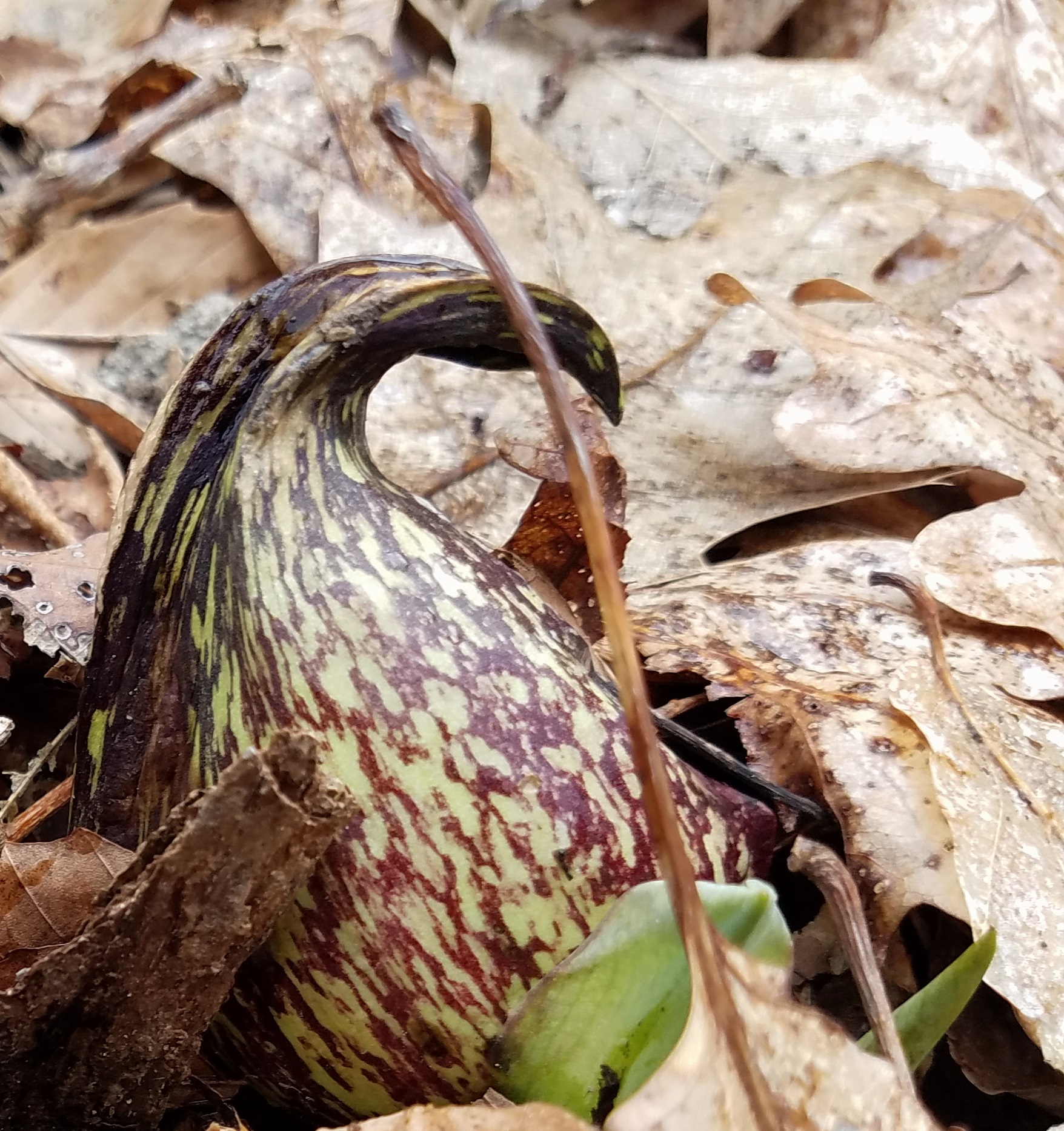
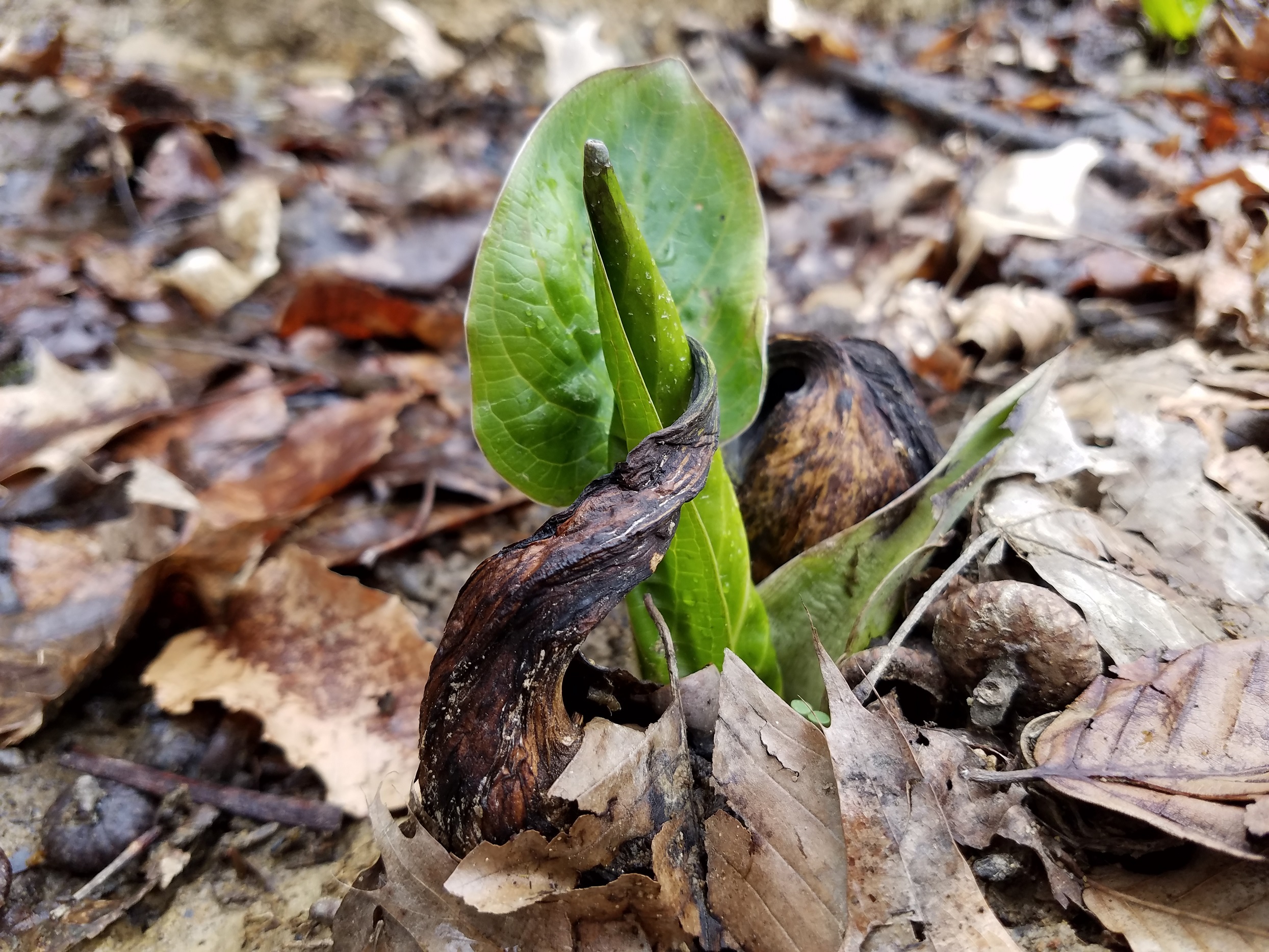
Perhaps more often overlooked on a nature walk, but certainly worth pausing to learn more about, mosses and fungi clung here and there to the sides of trees. On the moss below, if we look closely, we can even see representatives of the two distinct life stages—the sporophyte and the gametophyte. The sporophyte, with its long slender seta (looks like a stem) and capsule at the top, is taller than the short “leafy” gametophytes that make up the majority of what we see when we look at a carpet of moss.
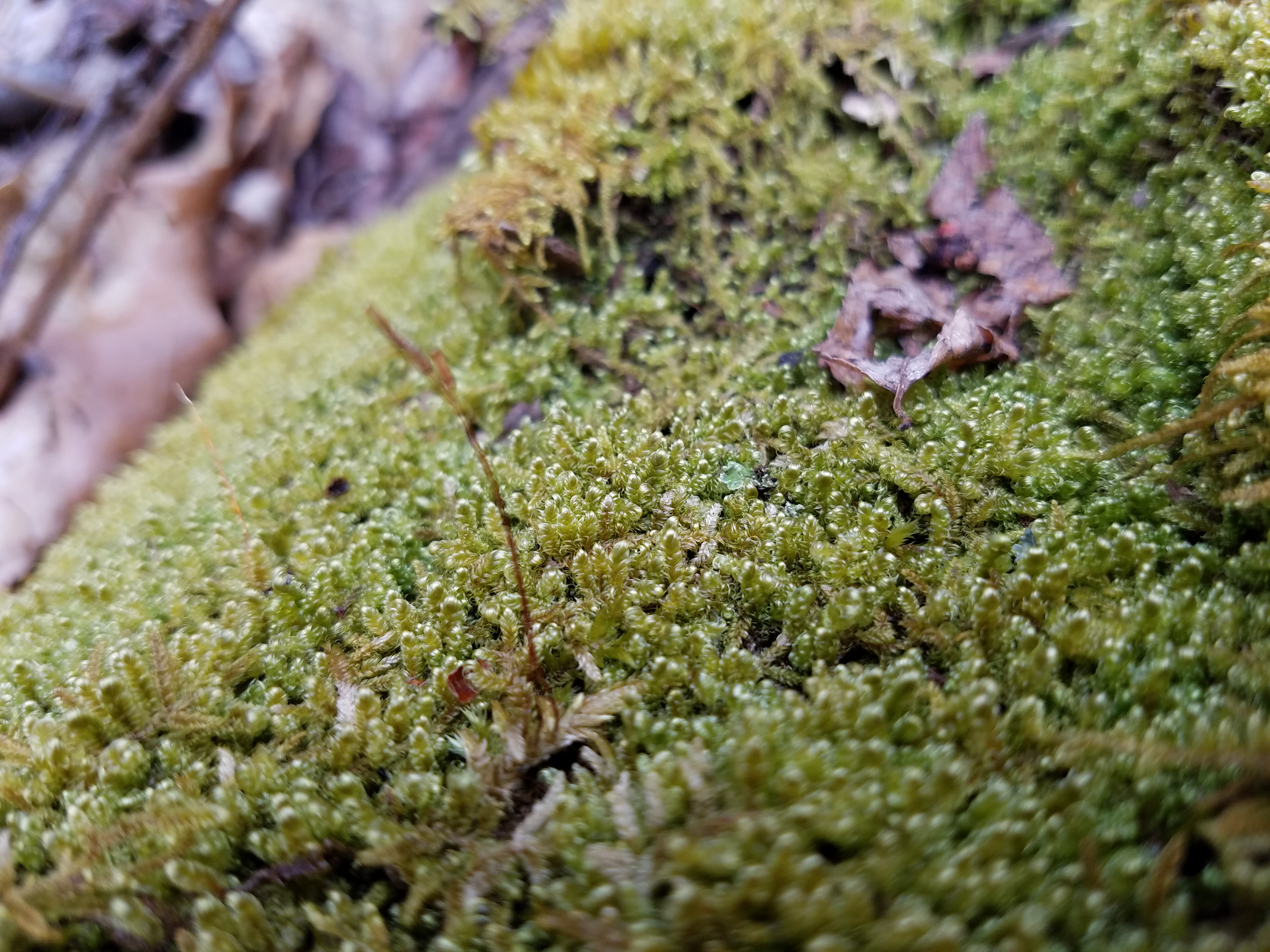
Fungi were also everywhere on the damp forest floor, but here is a good chance for us to look at a shelf fungus called false turkey tail—Stereum ostrea. This fungus is not safe for human consumption and is best left alone; but it is fascinating to observe.
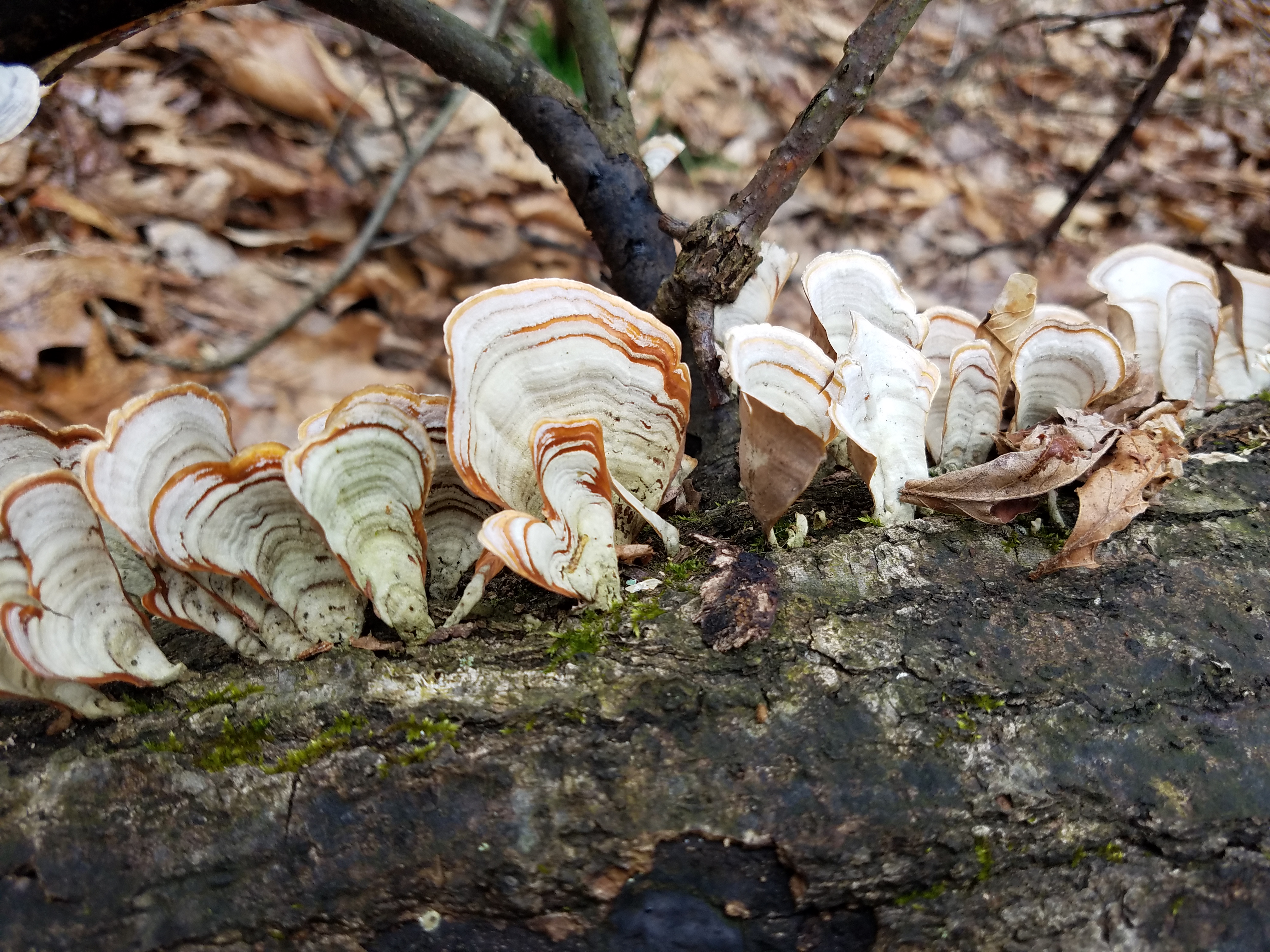
The plants and fungi weren’t the only living wonders in the park to take note of. Bobbing in and out of sight through the trees were cardinals, blue jays, robins, crows, and chickadees, plus the voices of several others. Overhead, mallards and Canada geese swooped by on their way to the lake, and the daunting silhouette of the occasional red-tailed hawk was announced by their distinct sharp cry. There was even one haunting great blue heron flying about the treetops, gracefully beating her wings while carrying her carefully folded long legs beneath her.
Unfortunately, on this walk into nature, there were also plenty of invasive plants present that appear to be out-competing our native plants. Invasive species are plants, animals, insects, etc., that have been brought into a completely new ecosystem—most often by some form of human activity—and pose a threat our native biota. On this trip, both multi-flora and Japanese honeysuckle were spotted, in addition to garlic mustard (below) along trails.
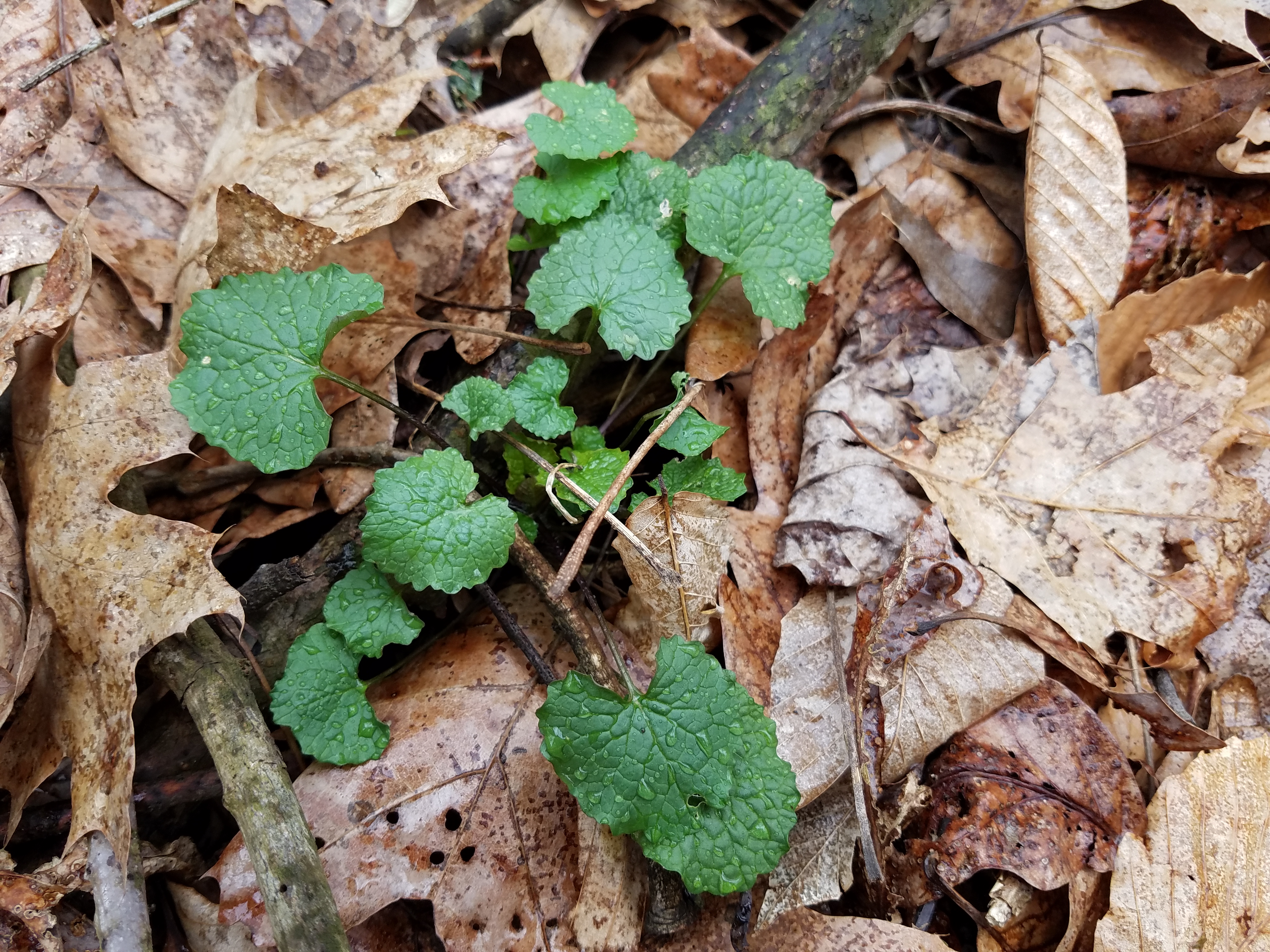
Don’t be too disheartened by this, though, because you can help! Most of our city and county parks rely on a dedicated network of volunteers who assist with all manner of stewardship activities. If you have loved this “excursion” to North Park, perhaps lending a bit time to protecting our native plants is an activity for you!
Connecting to the Outdoors Tip: As the season changes, each day brings something new to see outside. If you can’t make it to one of our city or county parks, keep an eye on the green spaces around you. Even better, share the signs of spring with us on social media by adding the hashtag #bioPGH. Let’s all watch spring bloom together!
Resources:
North Park interpretive naturalists and members of the Western Pennsylvania Mushroom Club aided in the identification of some of the species noted in this post.
USDA National Invasive Species Information Center
Pennsylvania Breeding Bird Atlas
Photo credits: All images are © Maria Wheeler-Dubas

